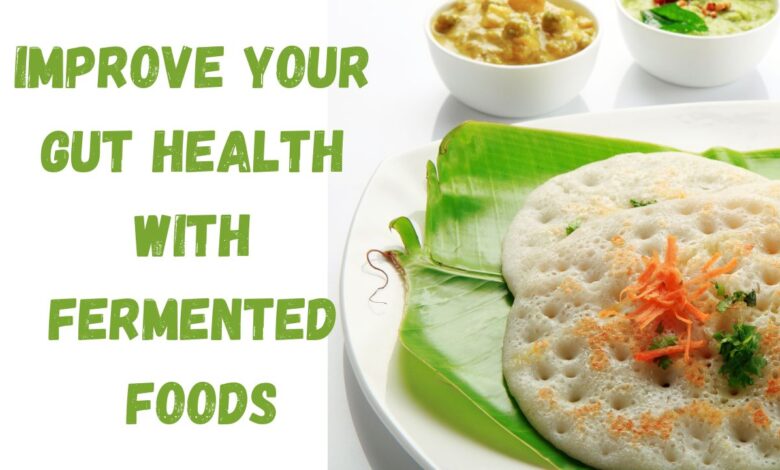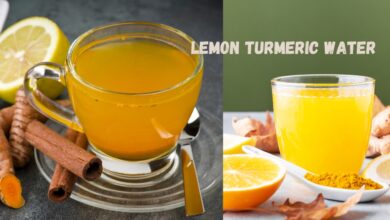
let’s talk about nine important dishes that are most popular in India. Even if you are from India, you might not have seen these foods, especially the last one, which is my favorite. Let’s dive deep into it!
As always I am emphasizing fermented foodsOur gut bacteria love fermented foods. Fermentation helps in the breakdown of products very easily, allows for better absorption, and feeds the good gut bacteria, which in turn is beneficial for our health to prevent chronic diseases like obesity.
Dhokla
Number one on the list is Dhokla. Dhokla is prepared by soaking rice and lentils like Chana Dal. They are then ground into a batter and fermented overnight. The overnight fermentation process is the key, which is absolutely critical for your good gut bacteria. Overnight fermentation helps the batter to rise while steaming. When you ferment the batter, it increases polyphenol availability. The flavonoids and phenolic acid in the polyphenols are potent antioxidants that will influence your gut microbiome directly. As they are steamed, homemade Dhokla, 1 to 2 per day, is an excellent low-calorie snack.
Dhokla is spongy like a trampoline park where the good gut bacteria can jump and bounce and play. The Dhokla turned out to be so hard that it could be used to construct the Statue of Unity! If you are familiar with Dhokla already, you can use it as a snack option in reduced quantities. If you’re not familiar with Dhokla, please check out the link in the description regarding how to make it.
Kanji
Product number three is called Kanji. Kanji is a fermented drink that people from Punjab, Uttar Pradesh, and Rajasthan love to have during winters. Bacteria in fermented food can actually survive the stomach acid and travel all the way into the intestine, growing our good gut bacteria. My US friend Mark Anthony, in winter, keeps himself warm by drinking fermented grapes daily, also called wine, and in summer, he chills out in my hospital ICU.
Kanji is made from antioxidant-rich black carrot, beetroot, mustard, and black salt. The potent concoction is preserved in a jar and left to ferment in the sun for 2 to 3 days. My friend Saran Singh is allergic to any kind of fermentation from vegetables, but he’s okay with fruits like red grapes, white grapes, black grapes, alpine grapes, and burgundy grapes. Instead of the ceramic jar, he should be made to stand out in the hot sun for 2 to 3 days to ferment himself!
Enduri Pitha
The fourth superfood is Enduri Pitha. Enduri Pitha is a variety of pancake made using fermented batter of ground rice and urad dal, extremely popular in the state of Odisha. Fermented foods can be easily digested because of partial protein digestion that happens during fermentation, which also increases the availability of antioxidants, vitamins, and minerals as well. Traditionally, it is steamed in wide-mouthed earthen pots. A frame made with twigs is placed inside the pot above the level of the water, and the pithas are placed on top of this frame to be steamed.
Prepared usually once a year during Prathamastami, just before winter sets in, this is a ritual that celebrates the life and prosperity of firstborns in a family. The parents of my patient AR celebrate the life and prosperity of him by giving laddus and gulab jamun to him. They celebrate his prosperity, but I prosper even though I am not the firstborn! Let me know if you have ever tried Enduri Pitha.
Hawaijar
The fifth superfood is Hawaijar. The whole soy seeds are soaked overnight and pressure-cooked till the seeds are soft. The cooked soy is packed tightly in a small bamboo basket, the sides of which are layered and lined with banana leaves. The basket is then kept in the sun for the fermentation process to take place for about 4 to 5 days. Now I know from where Mary Kom from Manipur got all the strength to win six world championships with three kids. For my patient Arami, having a kid itself is an achievement.
During fermentation, Bacillus subtilis is a bacteria that breaks down the protein into smaller free amino acids, explaining the rich quality of protein in this food. My loyal subscriber Subani is asking, “Sir, you always talk about fermented products only for vegetarians. Can you give me something non-vegetarian?” Only a brain fermented with non-vegetarian thoughts right from birth can think like this! I have tried this one; it is amazingly delicious.
Karisa
The sixth superfood is Karisa. Karisa is a type of bamboo that is indigenous to Northeast Asia. While it is edible, ripened bamboo shoots are used for the construction of huts typical to Assam. The young bamboo shoots are stripped off their outer fibrous layers, and the inner creamy white core is crushed and mixed with a plant called Garcinia pedunculata. Then it is tightly packed inside sterilized jars or pots and left to ferment for 5 to 10 days.
Food fermentation has relied on the microbiota naturally occurring on the raw food material. It can also be done by transferring the microbiome from previously fermented products. Packed with beneficial bacteria, this fermented bamboo shoot dish, Karisa, will help in digestion. The only connection that my friend Saran has with bamboo is that he watches videos of a guy building a house with bamboo inside the forest alone! I’m pretty sure he would skip Karisa by pole vaulting with the bamboo stick. Please let me know if you have tried Karisa before.
Sol Kadhi
Superfood number seven is Sol Kadhi. Sol Kadhi is a very popular Indian probiotic food. It is a speciality of the Konkan region that extends from Goa through Maharashtra. You extract fresh coconut milk from raw coconut and mix it with a plant species called Garcinia indica, also called kokum. You use garlic, cumin seeds, and other spices and grind it together. The probiotic content in this traditional drink promotes gut health. You have to be a little bit careful with the amount of coconut milk because even though it has healthy fats, it is rich in calories.
My loyal subscriber Subani is asking, “I will definitely try, Dr. Pal. What is the alcohol percentage in Sol Kadhi? Will I not be caught by the police when I bring it back home?” How on earth will I make him understand that not everything in Goa is alcohol? My friend Sarak Kumar and his wife Thiyur Sundari went for a family trip to Goa. She went to a place to try Sol Kadhi, and he went to a bar to try feni. They went as a couple to Goa and came back as singles! Let me know whether you know how to make Sol Kadhi.
Ragi Ambali
The eighth superfood is Ragi Ambali. Ragi Ambali, also known as Ragi Kanji, is a traditional South Indian beverage made from finger millet flour called ragi. It is consumed during the hot summer months for its cooling properties. It is a semi-liquid fermented broth made with buttermilk, finger millet flour, onion, curry leaves, and salt. The mixture is left overnight to ferment. Ragi Ambali can contain beneficial probiotics that support gut health.
My friend Sarak Kumar buys one cup of Ragi Kanji from the street shop and finishes one whole bag of finger chips kept as a side dish. Finger chips overpower the finger millet. Ragi Kanji is considered food for the poor by some people. There are two problems with this statement: number one, everybody should understand that health is wealth; number two, Ragi Kanji is not cheap anymore because it is eaten with onions! I love Ragi Kanji. Whenever I get a chance, I try to include it in my diet. Let me know whether you have tried this beautiful dish before.
Pickles
The number two on the list is Pickles. During pickling, the shelf life of food is extended by anaerobic fermentation, either using brine or vinegar. Vinegar contains a high level of acetate, which is one of the short-chain fatty acids that could potentially influence your gut microbiome. My patient Arami scrapes the pickle from every nook and corner of the pickle jar using his finger and licks it after one peg of alcohol. He then opens his eyes only after his kidney was put in a jar!
You should be careful with store-bought pickles because they contain a lot of salt and oil. With homemade pickles, you can control the oil, salt, and spices to your level. Because of its high salt content, you need to be careful with the amount, especially if you have high blood pressure. My friend Sarak Kumar went to Gujarat and asked the store guy, “Why are you having only pickles? Where is the alcohol? What are you going to do only with this pickle?” Let me know in the comment section if you have tried American pickles. How do you compare American pickles with Indian pickles? If you are a big fan of Indian pickles, what is your favorite pickle, whether it is homemade or not?
Dosa
The last superfood, my favorite superfood, is Dosa. Dosa, like any other fermented food, is rich in microorganisms and probiotics, which aid in digestion and promote good gut bacteria. In fact, wheat dosa made from fermented batter is another excellent source of probiotics. But the problem nowadays is they are adding so many things inside the dosa except for the bacteria. They’re adding lots of ghee, Oreo biscuits, charcoal, and even Rasgulla.
The ghee roast is made so long that if it is placed on the plate of my friend Saravanakumar in Tamil Nadu, my friend Abhijit Chakraborti from Bengal can eat it! And people pour so much oil: hypertension, diabetes, obesity. Homemade dosas, moderation in oil, and the number of dosas are the key. Let me know how many dosas you usually eat, depending upon the size of the dosa.
Also read:The Real Benefits of Chia Seeds
Conclusion
I always tell my friends to add lots of vegetables and fibers along with dosa so that you can decrease the number of dosas and increase the number of vegetables. These are all my favorite fermented foods. Let me know which one you have tried, which one you’re going to try, and which video you’re going to watch from the recipe link. The bottom line is any kind of fermented food is going to make your gut happy. Remember, the balance of good gut bacteria over bad gut bacteria is absolutely critical for your long-term health. Remember, one belly at a time. It is absolutely important.




